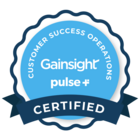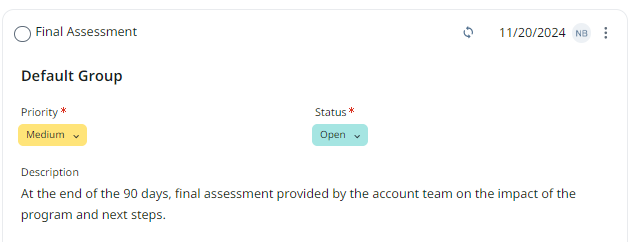Managing risk within your portfolio is close to, if not, the number one priority for CSMs. Many find themselves hesitant to open risks for their customers because they are concerned it might seem like they aren’t being a successful CSM. However, I would argue that identifying risk in your portfolio and raising it makes you a more successful CSM.
As leaders, it is our role to ensure team members have a way to identify risks in their portfolio and share them back with the organization.
One of the best ways to do this is to have a Call To Action (CTA) type in Gainsight for Risk. The good news for you is that “Risk” is an out of the box CTA type in Gainsight. So you are already on your first step there! This allows your team to create CTAs for each risk in their portfolio. Then your leadership team is able to see reports on how many risks are in the customer base (more on this later).
When you’re starting a Risk process, best practice would be to identify 2-3 main risk types. Typically, risks can be groups into one of these three categories:
- Customer Relationship and Adoption Risks
- Product and Service Delivery Risks
- Organizational Change Risks
For a more advanced step here, you can also create CTA Reasons that map to your risk types.
Now that we have a CTA type for Risk and Risk types, the next step to helping your team is to create 2-3 Playbooks to help them work through the risk. This enables them with the expected steps to take to mitigate the risk.
With the above Risk categories, we can now begin to build out a playbook for each. I would recommend that each Playbook be similar. A playbook could be as simple as:
- Create a Timeline update with the relevant information about the risk
- Email your executive stakeholder at the customer requesting a meeting
- Update your manager on next steps.
Using these few steps, you’ll be on your way to tracking and mitigating risk within your customer base!



